When it comes to the ever-growing SUV segment, two names that have captured attention are the Nissan X-Trail and the Dacia Bigster. Both vehicles come with modern features and attractive designs aimed at meeting the demands of today’s families and adventure seekers. This comparison will delve into the technical specifications and innovative features that each model brings to the table.
Nissan X-Trail vs Dacia Bigster – Performance, range & efficiency compared
Design and Dimensions
The Nissan X-Trail carries a robust SUV silhouette, measuring 4680 mm in length, 1840 mm in width, and standing 1720 mm tall. Its aggressive stance and contemporary design elements make it a popular choice among compact SUVs. In contrast, the Dacia Bigster has slightly more compact dimensions at 4570 mm in length, 1813 mm in width, and a height of 1705 mm. The understated character of its design emphasizes functionality and practicality.
Performance and Engine Options
Under the hood, the Nissan X-Trail offers a choice of petrol MHEV and full hybrid engines, producing power outputs ranging from 163 to 213 HP. The X-Trail also boasts an efficient fuel consumption rate, with variants consuming between 5.7 to 6.9 L/100km. The vehicle is available in both front-wheel and all-wheel drive configurations, catering to a variety of driving preferences.
On the other hand, the Dacia Bigster is equipped with petrol MHEV and full hybrid engines, along with a rare LPG option. Power outputs for the Bigster are slightly lower, ranging from 130 to 155 HP, with remarkable fuel efficiency reaching as low as 4.7 L/100km. Like the X-Trail, the Bigster offers both front-wheel and all-wheel drive options, providing flexibility based on driving conditions.
Acceleration and Speed
The Nissan X-Trail accelerates from 0-100 km/h in as little as 7 seconds, a notable performance feature and testament to its sporty handling. Its top speed reaches up to 200 km/h, appealing to those who desire an exhilarating driving experience. In comparison, the Dacia Bigster has an acceleration time of around 9.7 to 11.2 seconds, with a maximum speed of 180 km/h—still respectable but not as dynamic as the X-Trail.
Interior Comfort and Capacity
Inside, the Nissan X-Trail offers a flexible seating arrangement for either 5 or 7 passengers, along with generous trunk space varying from 575 to 585 liters, making it an ideal family vehicle. The modern dashboard layout comes equipped with a suite of the latest technology, such as a digital instrument cluster and advanced infotainment system.
In contrast, the Dacia Bigster is more focused on simplicity and functionality, seating up to 5 passengers with a trunk capacity of up to 667 liters. Although it may lack some of the high-end tech found in the X-Trail, the interior is designed for durability and practicality, appealing to budget-conscious buyers.
Innovative Features and Safety
Both vehicles are equipped with a range of safety and driver-assist features; however, the Nissan X-Trail has an edge with its extensive safety suite that includes advanced intelligent driving aids, lane-keeping assistance, and adaptive cruise control. The emphasis on safety is a critical selling point, especially for families.
The Dacia Bigster, while offering basic safety features, does not have the same level of technological sophistication but does include essential safety measures to ensure peace of mind on the road.
Conclusion
Ultimately, the choice between the Nissan X-Trail and the Dacia Bigster may come down to individual preferences and needs. The X-Trail excels in performance, interior technology, and safety features, making it a top pick for those willing to invest a little more for added luxury. Meanwhile, the Bigster appeals to value-seekers looking for functionality and efficiency without the frills. Both models reflect the versatility and capacity expected from modern SUVs, ensuring they will continue to compete strongly in the market.
Here’s where it gets real: The technical differences in detail
Costs and Efficiency:
Price and efficiency are key factors when choosing a car – and this is often where the real differences emerge.
Dacia Bigster has a decisively advantage in terms of price – it starts at 20600 £, while the Nissan X-Trail costs 34000 £. That’s a price difference of around 13466 £.
Fuel consumption also shows a difference: Dacia Bigster manages with 4.70 L and is therefore distinct more efficient than the Nissan X-Trail with 5.70 L. The difference is about 1 L per 100 km.
Engine and Performance:
Power, torque and acceleration are the classic benchmarks for car enthusiasts – and here, some clear differences start to show.
When it comes to engine power, the Nissan X-Trail has a evident edge – offering 213 HP compared to 155 HP. That’s roughly 58 HP more horsepower.
In acceleration from 0 to 100 km/h, the Nissan X-Trail is evident quicker – completing the sprint in 7 s, while the Dacia Bigster takes 9.70 s. That’s about 2.70 s faster.
In terms of top speed, the Nissan X-Trail performs minimal better – reaching 200 km/h, while the Dacia Bigster tops out at 180 km/h. The difference is around 20 km/h.
There’s also a difference in torque: Nissan X-Trail pulls convincingly stronger with 525 Nm compared to 230 Nm. That’s about 295 Nm difference.
Space and Everyday Use:
Cabin size, boot volume and payload all play a role in everyday practicality. Here, comfort and flexibility make the difference.
Seats: Nissan X-Trail offers clearly perceptible more seating capacity – 7 vs 5.
In curb weight, Dacia Bigster is to a small extent lighter – 1425 kg compared to 1668 kg. The difference is around 243 kg.
In terms of boot space, the Dacia Bigster offers a bit more room – 667 L compared to 585 L. That’s a difference of about 82 L.
In maximum load capacity, the Dacia Bigster performs distinct better – up to 1937 L, which is about 513 L more than the Nissan X-Trail.
When it comes to payload, Nissan X-Trail slightly takes the win – 574 kg compared to 467 kg. That’s a difference of about 107 kg.
Who comes out on top?
Overall, the Dacia Bigster shows itself to be edges out slightly and secures the title of DriveDuel Champion.
It convinces with the more balanced overall package and proves to be the more versatile choice for everyday use.
Costs and Consumption
View detailed analysis
Engine and Performance
View detailed analysis
Dimensions and Body
View detailed analysis
 @ Dacia / Renault Group Media
@ Dacia / Renault Group Media
Dacia Bigster
Nissan X-Trail
The Nissan X-Trail is a roomy, no-nonsense family SUV that mixes sensible practicality with a quietly modern look, making it an easy choice for busy lives and weekend escapes. It drives with calm confidence, delivers a comfortable ride and sensible tech, and won’t demand drama while doing the everyday heavy lifting.
details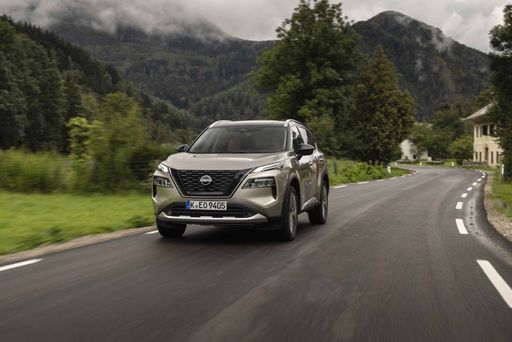 @ Nissan Motor Corporation
@ Nissan Motor Corporation
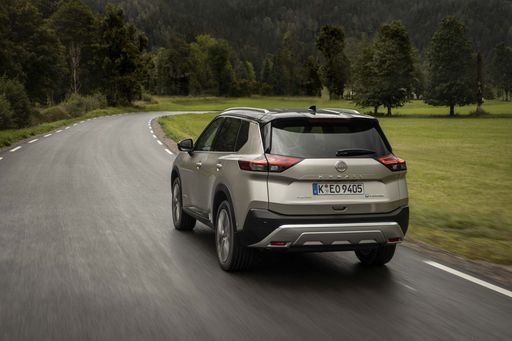 @ Nissan Motor Corporation
@ Nissan Motor Corporation
 @ Nissan Motor Corporation
@ Nissan Motor Corporation
 @ Nissan Motor Corporation
@ Nissan Motor Corporation
Dacia Bigster
The Bigster is poised to redefine the SUV segment with its bold design and spacious interior, catering to the needs of both families and adventure seekers alike. Emphasizing sustainability and practicality, this model reflects a modern approach to automotive engineering, making it a compelling choice for environmentally conscious drivers. With its striking presence on the road, the Bigster not only captures attention but also embodies a new era of versatile mobility.
details @ Dacia / Renault Group Media
@ Dacia / Renault Group Media
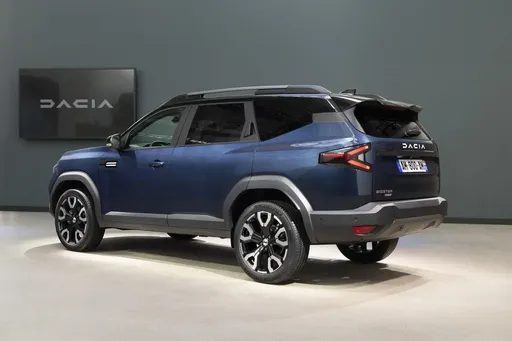 @ Dacia / Renault Group Media
@ Dacia / Renault Group Media
 @ Dacia / Renault Group Media
@ Dacia / Renault Group Media
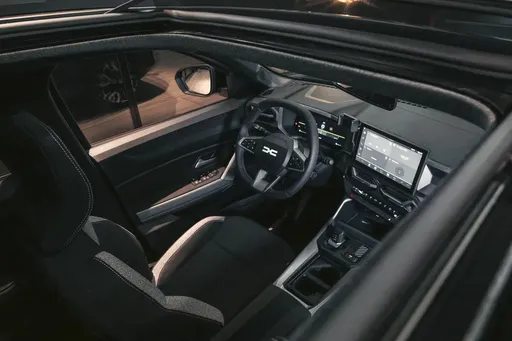 @ Dacia / Renault Group Media
@ Dacia / Renault Group Media
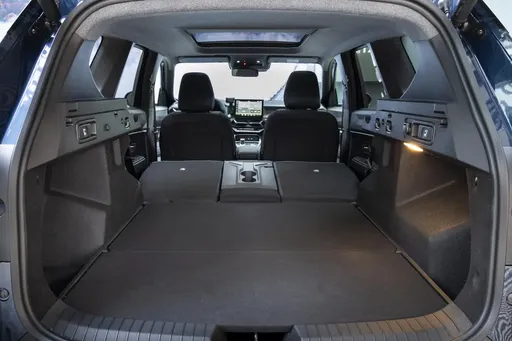 @ Dacia / Renault Group Media
@ Dacia / Renault Group Media
 @ Nissan Motor Corporation
@ Nissan Motor Corporation
|
 @ Dacia / Renault Group Media
@ Dacia / Renault Group Media
|
|
|
|
Costs and Consumption |
|
|---|---|
|
Price
34000 - 50400 £
|
Price
20600 - 26600 £
|
|
Consumption L/100km
5.7 - 6.9 L
|
Consumption L/100km
4.7 - 7.1 L
|
|
Consumption kWh/100km
-
|
Consumption kWh/100km
-
|
|
Electric Range
-
|
Electric Range
-
|
|
Battery Capacity
-
|
Battery Capacity
-
|
|
co2
131 - 161 g/km
|
co2
106 - 137 g/km
|
|
Fuel tank capacity
55 L
|
Fuel tank capacity
50 - 55 L
|
Dimensions and Body |
|
|---|---|
|
Body Type
SUV
|
Body Type
SUV
|
|
Seats
5 - 7
|
Seats
5
|
|
Doors
5
|
Doors
5
|
|
Curb weight
1668 - 1961 kg
|
Curb weight
1425 - 1547 kg
|
|
Trunk capacity
177 - 585 L
|
Trunk capacity
510 - 667 L
|
|
Length
4680 mm
|
Length
4570 mm
|
|
Width
1840 mm
|
Width
1813 mm
|
|
Height
1720 mm
|
Height
1705 mm
|
|
Max trunk capacity
1396 - 1424 L
|
Max trunk capacity
1813 - 1937 L
|
|
Payload
432 - 574 kg
|
Payload
383 - 467 kg
|
Engine and Performance |
|
|---|---|
|
Engine Type
Petrol MHEV, Full Hybrid
|
Engine Type
Petrol MHEV, Full Hybrid, LPG
|
|
Transmission
Automatic
|
Transmission
Manuel, Automatic
|
|
Transmission Detail
CVT, Reduction Gearbox
|
Transmission Detail
Manual Gearbox, Automated Manual
|
|
Drive Type
Front-Wheel Drive, All-Wheel Drive
|
Drive Type
All-Wheel Drive, Front-Wheel Drive
|
|
Power HP
163 - 213 HP
|
Power HP
130 - 155 HP
|
|
Acceleration 0-100km/h
7 - 9.6 s
|
Acceleration 0-100km/h
9.7 - 11.2 s
|
|
Max Speed
170 - 200 km/h
|
Max Speed
180 km/h
|
|
Torque
300 - 525 Nm
|
Torque
230 Nm
|
|
Number of Cylinders
3
|
Number of Cylinders
3 - 4
|
|
Power kW
120 - 157 kW
|
Power kW
96 - 115 kW
|
|
Engine capacity
1497 cm3
|
Engine capacity
1199 - 1799 cm3
|
General |
|
|---|---|
|
Model Year
2024
|
Model Year
2025
|
|
CO2 Efficiency Class
F, D, E
|
CO2 Efficiency Class
E, D, C
|
|
Brand
Nissan
|
Brand
Dacia
|
Is the Nissan X-Trail offered with different drivetrains?
The Nissan X-Trail is offered with Front-Wheel Drive or All-Wheel Drive.
The prices and data displayed are estimates based on German list prices and may vary by country. This information is not legally binding.
